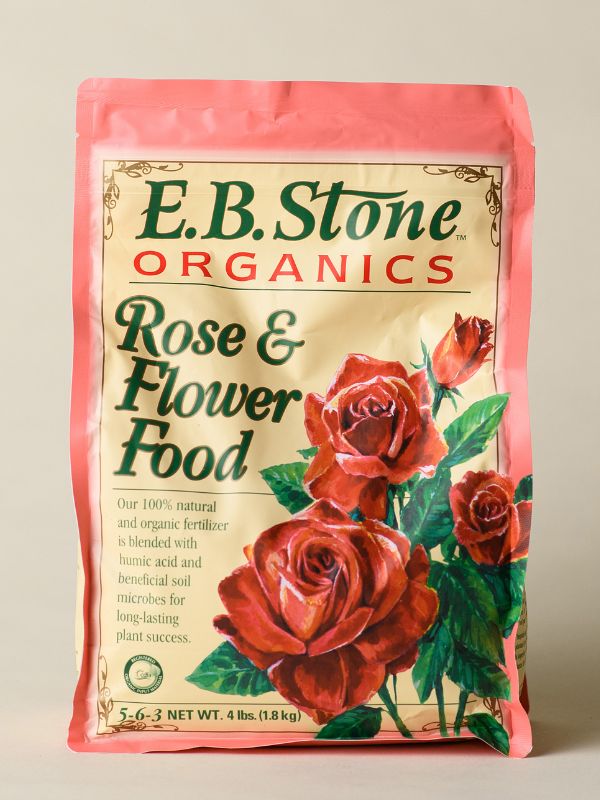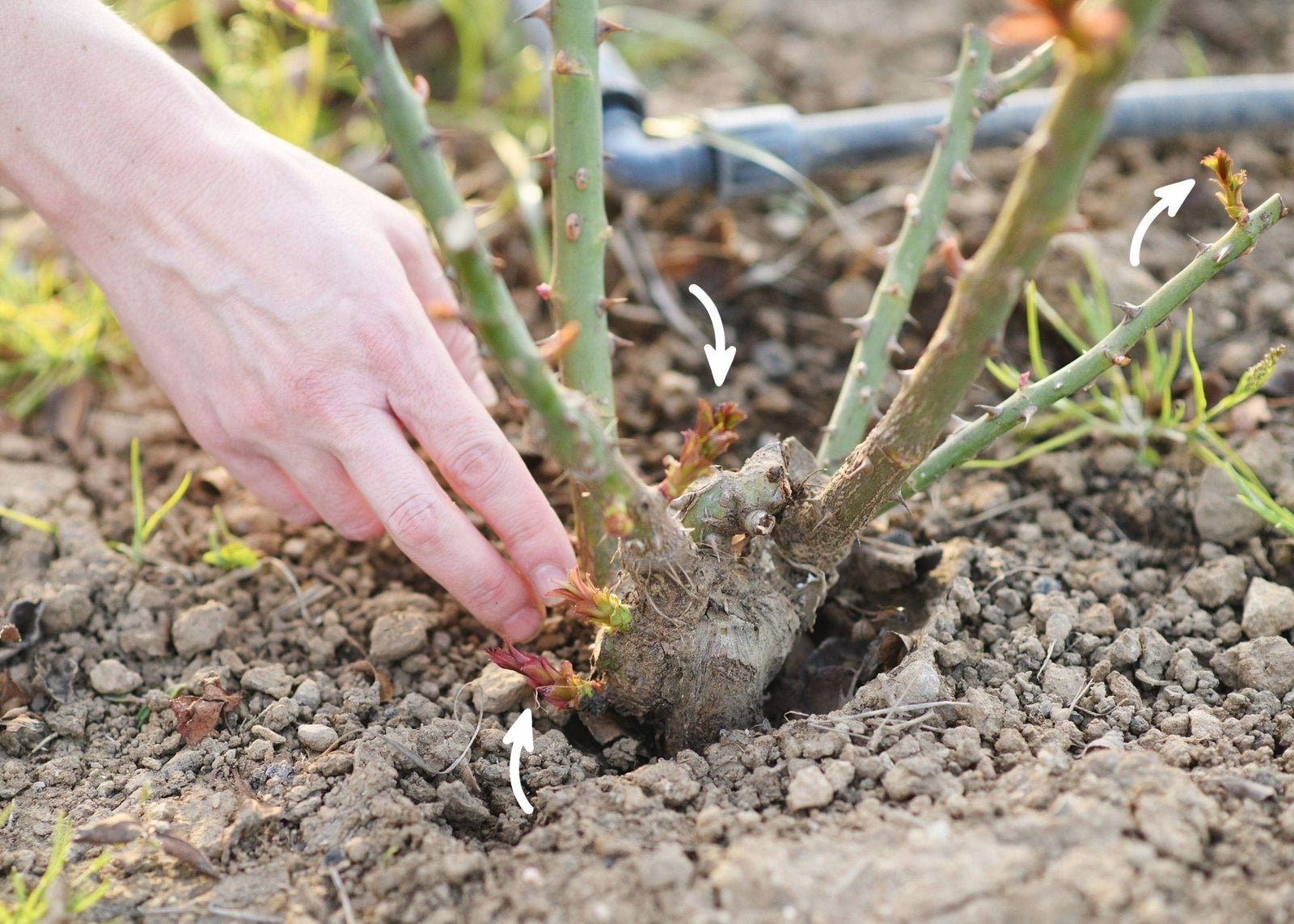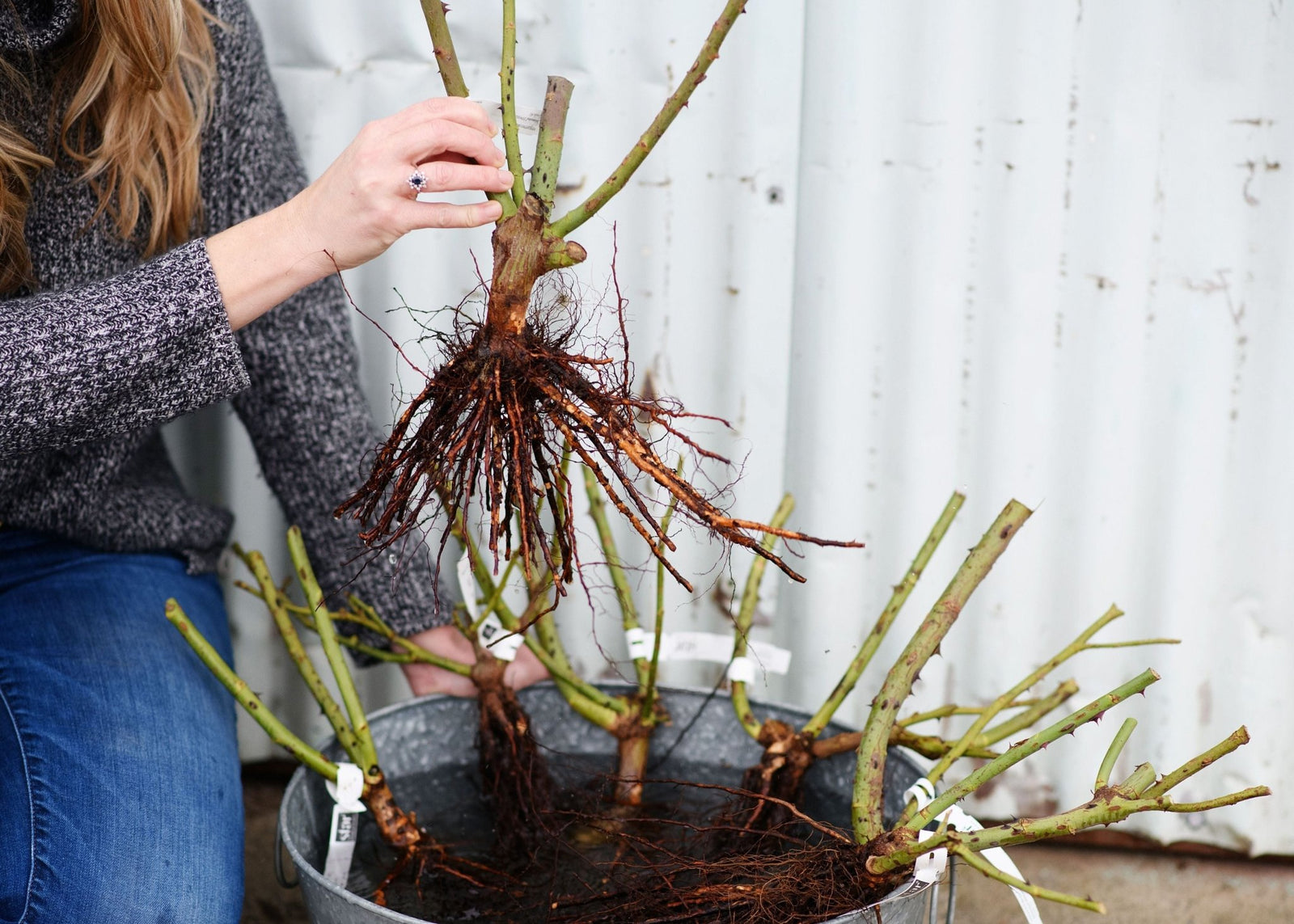Hi there! Spring rose care is in full swing this week, and after covering fertilizer, it's time to tackle one of the biggest challenges: insects. If you've ever stepped outside to find thrips on your blooms or a gang of Japanese beetles moving in, you know the heartbreak of seeing your roses under attack.
There's no one-size-fits-all solution to pest control—every garden and location presents its own unique challenges, with different insects to address. What works for one person's garden or farm may not work for another. However, over the years, I've learned some valuable strategies for keeping roses thriving, even against the most persistent pests. Today, I'm sharing those insights with you.
Step 1: Monitor
Inspect your roses weekly - daily is better to really get a jump on catching them early. Use
sticky traps to monitor, examine with a
hand lens, or use your naked eye. Check buds, petals, and leaves (especially the undersides)—you'd be amazed at what you'll spot with a quick magnified look. Catching pests early means less damage and easier fixes.
Not sure what's munching on your roses? Snap a pic and send it to your local ag extension or master gardener group (usually free!). I also offer ID help and treatment recommendations through my
1:1 online consultations.
Step 2: Treatment
Found a pest? Start small. Some will be deterred or removed by a water spray from a hose or hand-pick unwanted bugs before reaching for stronger solutions like pesticides. Consider introducing natural predators or, if needed, applying organic or non-organic pesticides. Always use the least invasive method first and escalate if necessary.
Step 3: Apply Insecticides + Rotate
When using insecticides, rotate between 3-4 products (with different active ingredients or modes of action) to prevent resistance. Stick to early mornings when temps are cooler, and pollinators are less active for application. If you're a flower farmer, even organic sprays may require permits—check with local authorities!
Pro tip: Keep notes year-round. Document pests, treatments, and outcomes. Over a few years you will start to see patterns emerge like when the insects appear each year.
Systemic Insecticides
-
Bayer BioAdvanced All-in-One Rose & Flower Care
- Active Ingredient: Imidacloprid (insecticide) + Tebuconazole (fungicide) + Fertilizer
- Use: Granular absorbed by the plant, controls aphids, Japanese beetles, thrips, and other pests for weeks.
- Pros: Long-lasting, low visibility
- Cons: Can harm pollinators—avoid using near bloom time. No longer available for purchase to home gardeners in California.
-
Bonide Systemic Insect Control
- Active Ingredient: Acephate
- Use: Spray or drench; effective on aphids, thrips, whiteflies.
- Pros: Highly effective, especially on difficult pests like thrips
- Cons: Strong smell, toxic to beneficial insects—use carefully.
Contact Insecticides
-
Sevin Insect Killer (Garden Dust)
- Active Ingredient: Carbaryl
- Use: Broad-spectrum contact/control insecticide
- Pros: Very effective on beetles, caterpillars
- Cons: Not selective—can kill bees and predators too
-
Arber Organic Insecticide
- Active Ingredient: Heat-killed Burkholderia spp., strain A396
- Use: Ready-to-spray formula; controls over 30 pests including aphids, thrips, Japanese beetles, mealybugs, and scale.
- Pros: Certified organic; safe for kids, pets, and pollinators; starts working immediately; provides long-lasting protection.
- Cons: May require more frequent applications compared to synthetic options.
Broad-Spectrum Residual Insecticide
-
Talstar P (Professional) or Talak
- Active Ingredient: Bifenthrin (7.9%)
- Use: Foliar spray; controls over 75 pests including aphids, spider mites, caterpillars, and beetles.
- Pros: Long-lasting residual control; water-based and non-staining; safe for use on ornamental plants like roses.
- Cons: Can be toxic to bees—avoid spraying during bloom or when pollinators are active.
Targeted Options for Specific Pests
-
Spinosad (e.g., Monterey Garden Insect Spray, Captain Jack's Deadbug Brew or Conserve) – Though technically derived from soil bacteria, some versions are not certified organic so check the product label. Very effective on thrips, caterpillars, sawflies.
-
Abamectin (e.g., Avid) – Great for spider mites and leafminers, also hits thrips. Often used in greenhouse and professional cut flower farms.
-
Insect Growth Regulators (IGRs) like Azadirachtin (Neem derivative) or Pyriproxyfen – Stops pest development, great as part of IPM rotation.
-
Beneficial Insects – ladybugs, green lacewings, parasitic wasps, predatory mites & nematodes. Species will vary depending on the insect you are trying to treat. Check with the insectary for availability & options.
This week's action step is to take some time to get hands-on in your garden—monitoring, identifying, and applying the appropriate treatments where needed. Stay curious and keep an eye out for beneficial insects like ladybugs and lacewings, as they play such an important role in sustainable pest management. It's all about creating balance in your garden ecosystem, and with time and practice, you'll become a pro at recognizing what your garden needs.
Next week, we'll be shifting gears as we continue our spring rose care theme, focusing on irrigation. Be sure to check your inbox next Sunday for all the details. Until then, happy gardening and don't forget to enjoy the small victories—every healthy leaf and bloom is a testament to your care and dedication!























